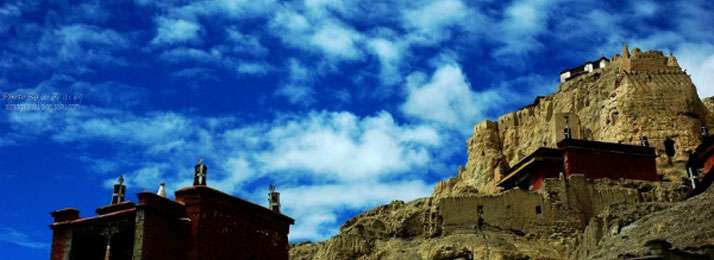
Over 700 years Guge kingdom flourished with joy and prosperity in Ngari prefecture, Guge was founded in the 10th century that is 868 A.D and use to be the Old Summer Palace for kings in Tibet. Gradually the kingdom got unstable by internal disorder and invasion from Ladakh (present Kashmir) that actually came to help Guge reign and ruled the area for several years. Over several years, Guge played a vital role in Tibetan society commercially and religiously, many theme of Buddhism also spread from the area and many trades of exportation and importation happens at the time. The capital of the Guge kingdom locates in Tholing and Tsaprang which actually ruled by the last monarch of Tibetan Empire called Lang Darma with several thousands of armies or soldiers. Jesuit missionary was the first westerner group, who visited Guge area in 1624 established a church there under permission of the Guge ruler to provide Christianity.
Historically, the descendent of Lang Darma called Gyidey Nyimagon lost the war and escaped to Ngari where he established a small kingdom, dividing the area into three major parts to share between his three sons. Guge kingdom ruled by his youngest son and one by one there are around 16 King’s total ruled the kingdom. Moreover, religious activities like Rinchen Tsangpo (958-1055) a Buddhist monk who studied in India and initially promote religious thoughts into western Tibet that after pass on to his younger brother Khor Ray. Overall, Guge became the main center for economy, trade, political and religious center in many ways. As after the lost of Guge kingdom, Tibet remains isolation for more than 400 years where happened so many starvation, thirst and poverty. Thus, people always appreciate and recalls the powerful and huge kingdom of Guge.
Tsanda County locates on 3800 meters above sea level, is famous for ruins of the Lost Kingdom of Tibet and the vast stretches of clay forests, explorers have found over 400 rooms, 800 caves, some fortresses, secret paths, pagodas, granaries and all kinds of burial places. Many wonders still hide within the area and a specialist still exploring the new things at Guge kingdom and it is listed under the first group of Cultural Relics of National Importance under the Protection of State. Many of secret path lead to the top of some temples, palaces and local residences.
Architectural group has spotted 1,416 surviving pieces of architectural sites and some are decorated with various formation figures of Buddha and scriptures. The larger works of architecture of includes the Red Temple, White Temple and the King’s palace. Both the temples are at same size covering 300 square meters and 36 square pillars lifting the temple inside, mural paintings are on every wall in White temple with a special painting about the Guge kings. In the Red Temple, one of holy mural painting tells about the wel-coming of the Atisha (the great Indian master from Bengal) to Tibet in the ancient time and in the painting, some local woman’s are with drums and horns to show their gratitude for the coming honorable master.
At present, Guge kingdom is lost everything except the beauties left after 16th century, the clay forests make a safeguard fence to the whole area with deep-rooted culture and unfathomable enigmas, and however everything is changing everywhere and now the Guge kingdom is also changing with the renovation and development of Ngari Prefecture’s acts. They are taking care of everything inside the prefecture and they still working hard on such projects to make a better place for every tourist, traveler and especially for the locals. These projects are showing positive results in Tibet so that the coming generations of whole world can see the legendry histories and mythical places on this mother earth.
